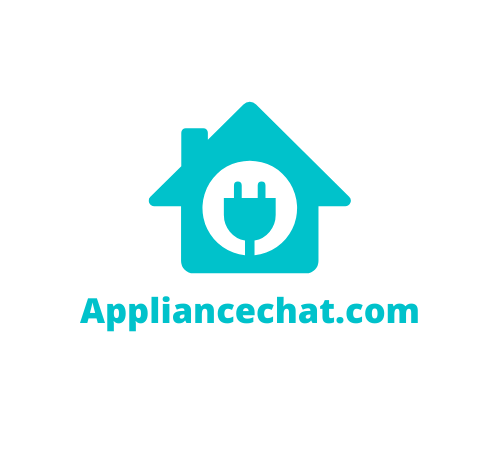A dryer is an essential appliance that is commonly found in households around the world. It is a convenient and efficient way to dry clothes, linens, and other items.
However, many people do not know the main components of a dryer and how it works. In this article, we will discuss the main components of a dryer and how they function.
The first component of a dryer is the drum. The drum is the part of the dryer that holds the clothes. It is usually made of stainless steel and has small holes that allow the hot air to circulate through the clothes.
The drum rotates as the clothes are dried, which helps to prevent wrinkles and ensures that all areas of the clothes are exposed to the hot air. The drum is also equipped with fins that help to lift and tumble the clothes, which aids in the drying process.
Main Components of a Dryer
A dryer is a common household appliance that is used to dry wet clothes. It works by using hot air to evaporate the moisture from the clothes and then venting the humid air outside.
A typical dryer has several main components that work together to accomplish this task.
Drum
The drum is the main part of the dryer where the clothes are placed. It is a large, cylindrical container that rotates on an axis. The drum is usually made of stainless steel and has small holes on its surface to allow the hot air to circulate through the clothes.
Motor
The motor is responsible for rotating the drum. It is usually located at the back of the dryer and is connected to the drum by a belt. The motor is powered by electricity and can be controlled by the dryer’s timer or controls.
Heating Element
The heating element is responsible for heating the air that is circulated through the drum. It is usually located at the bottom of the dryer and is powered by electricity. The heating element can be made of several materials, including ceramic, metal, or quartz.
Air Duct
The air duct is a tube that carries the hot air from the heating element to the drum. It is usually made of metal and is connected to the back of the dryer. The air duct also carries the humid air out of the dryer and into the vent.
Lint Trap
The lint trap is a small filter that is located near the front of the dryer. Its purpose is to catch any lint or debris that is produced during the drying process. The lint trap should be cleaned after every use to prevent it from becoming clogged.
Timer
The timer is a mechanism that controls how long the dryer runs. It is usually located on the front of the dryer and can be set to various time intervals.
Once the timer reaches zero, the dryer will automatically shut off.
Thermostat
The thermostat is a device that regulates the temperature inside the dryer. It is usually located near the heating element and can be set to various temperatures. The thermostat ensures that the dryer does not overheat and cause a fire.
Controls
The controls are the buttons and knobs that are used to operate the dryer. They are usually located on the front of the dryer and can be used to set the timer, temperature, and other settings.
In summary, a dryer is made up of several main components, including the drum, motor, heating element, air duct, lint trap, timer, thermostat, and controls.
Each of these components plays an important role in the drying process and must be functioning properly for the dryer to work efficiently.
Additional Components
Belts
Dryers use belts to transfer power from the motor to the drum. The belt wraps around the drum and the motor pulley, allowing the motor to turn the drum.
Over time, belts can wear out and become stretched, causing the drum to spin more slowly or not at all. If the belt breaks, the drum will not turn. It is important to inspect the belt regularly and replace it if it shows signs of wear.
Rollers
Rollers are small wheels that support the drum as it rotates. Dryers typically have two or more rollers that are located at the back of the drum. Rollers can become worn or damaged over time, causing the drum to wobble or make a thumping noise. If a roller is damaged, it should be replaced.
Idler Pulley
The idler pulley is a small wheel that keeps tension on the belt. It is located near the motor and is attached to a spring. The spring keeps the belt tight, which allows it to transfer power from the motor to the drum.
If the idler pulley is damaged or the spring is broken, the belt may become loose and slip off the motor pulley or drum.
Bearings
Bearings are small metal balls that allow the drum to rotate smoothly. Dryers typically have two or more bearings that are located at the front and back of the drum.
Over time, bearings can become worn or damaged, causing the drum to make a loud grinding noise. If a bearing is damaged, it should be replaced.
Overall, these additional components are important for the proper functioning of a dryer. Regular inspection and maintenance of these components can help prevent costly repairs and extend the life of the dryer.
Safety Features
Dryers come with several safety features to ensure that the appliance is safe to use. These safety features help to prevent fires, injuries, and other hazards that can occur when using a dryer.
Thermal Fuse
One of the main safety features of a dryer is the thermal fuse. The thermal fuse is a small device that is designed to prevent the dryer from overheating.
If the temperature inside the dryer gets too high, the thermal fuse will break the circuit and stop the dryer from running. This helps to prevent fires and other hazards that can occur when a dryer overheats.
Door Switch
Another important safety feature of a dryer is the door switch. The door switch is a small switch that is located near the dryer door. When the dryer door is closed, the switch is activated and allows the dryer to run.
If the door is opened during operation, the switch is deactivated, and the dryer will stop running. This helps to prevent injuries that can occur when someone tries to open the dryer door while it is running.
Dryers may also come with other safety features, such as a lint filter, which helps to prevent fires by trapping lint and other debris that can accumulate inside the dryer.
It is important to follow all safety instructions when using a dryer to ensure that the appliance is used safely and effectively.
Maintenance and Care
To ensure that your dryer operates efficiently and lasts for a long time, regular maintenance and care are essential. Here are some tips to keep your dryer in good condition:
- Clean the lint filter after every use: The lint filter collects lint and other debris from your clothes, and if it gets clogged, it can cause the dryer to overheat and even catch fire. To prevent this, clean the lint filter after every use.
- Clean the exhaust vent: The exhaust vent is the duct that carries hot, moist air out of the dryer. Over time, it can become clogged with lint and debris, which can reduce the dryer’s efficiency and increase the risk of fire. To prevent this, clean the exhaust vent regularly.
- Check the drum for damage: The drum is the part of the dryer that rotates and tumbles your clothes. If it becomes damaged, it can cause the dryer to vibrate excessively, which can damage other parts of the machine. Check the drum regularly for signs of damage, such as cracks or dents.
- Check the power cord: The power cord is the cable that connects the dryer to the electrical outlet. Over time, it can become frayed or damaged, which can create a fire hazard. Check the power cord regularly for signs of damage, and replace it if necessary.
- Check the gas line: If your dryer is gas-powered, it will have a gas line that connects it to the gas supply. Check the gas line regularly for leaks or damage, and have it repaired or replaced if necessary.
By following these simple tips, you can keep your dryer in good condition and ensure that it operates efficiently and safely for years to come.
Related Articles
- Dryer Making Noise But Not Spinning (Solved)
- Do Clothes Shrink In The Dryer (Answered)
- Dryer Keeps Stopping and Starting? (Answered)
References
- Image by wayhomestudio on Freepik

